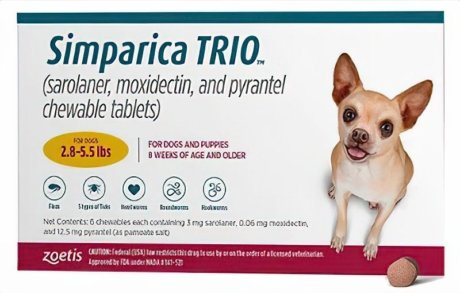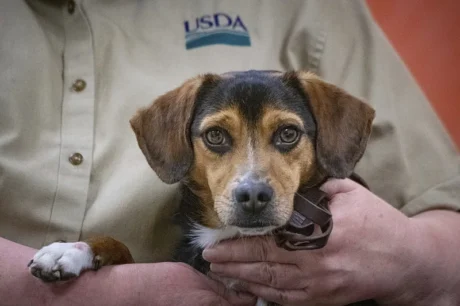Gabapentin for Dog: A Comprehensive Guide to Canine Health
In the world of veterinary medicine, Gabapentin has emerged as a potent and versatile medication, offering relief and comfort to countless dogs suffering from various health issues. This extensive guide aims to provide you with a deep understanding of Gabapentin’s uses, benefits, dosages, safety considerations, and more. Whether you’re a concerned pet owner or a veterinary professional, this article will serve as an invaluable resource on this medication.
What Is Gabapentin for Dog?
Gabapentin, commercially known as Neurontin, is a medication initially developed for human use. However, it has found its place in the world of veterinary medicine due to its efficacy in managing various health conditions in dogs. It belongs to the class of anticonvulsant drugs.

Gabapentin primarily works by affecting the transmission of specific neurotransmitters in the brain. It modulates the release of excitatory neurotransmitters, thereby reducing excessive nerve activity. This mechanism makes it effective in treating seizures and nerve-related pain, among other things.
Common Uses and Benefits for Gabapentin for Dog
1. Pain Management
One of the most prevalent uses of Gabapentin in dogs is for pain management. It’s particularly beneficial for canines suffering from chronic pain conditions such as osteoarthritis, intervertebral disc disease, or musculoskeletal discomfort. Gabapentin helps alleviate pain and enhances the overall quality of life for these dogs.
2. Seizure Control
Epilepsy is a challenging condition that affects some dogs. Gabapentin can play a pivotal role in managing and reducing the frequency and severity of seizures. It stabilizes electrical activity in the brain, which is crucial for preventing seizures in epileptic dogs.
3. Anxiety Alleviation
Dogs can experience anxiety and restlessness in various situations, such as during car rides, thunderstorms, or separation from their owners. Gabapentin’s calming effects can help mitigate anxiety, making it a useful tool for anxious dogs and their owners.
4. Post-Surgery Pain
After undergoing surgical procedures, dogs may experience post-operative pain and discomfort. Gabapentin is often prescribed to manage this pain effectively, allowing for a smoother and more comfortable recovery process.
Dosage Guidelines and Safety of Gabapentin for Dog
1. Consultation with Your Veterinarian
Before initiating Gabapentin therapy for your dog, it is imperative to consult your veterinarian. Your vet will evaluate your dog’s specific condition, health history, and any potential contraindications. This step is crucial to ensure the safe and effective use of Gabapentin.
2. Initial Dosage
The typical starting dosage for Gabapentin in dogs ranges from 5 to 10 milligrams per pound of the dog’s body weight. This initial dosage is typically administered three times a day. However, dosages may vary depending on the individual dog’s needs.
3. Ongoing Dosage Adjustments
Gabapentin dosages may need to be adjusted over time to ensure that your dog receives the optimal level of pain relief or seizure control. It is essential to follow your veterinarian’s guidance closely when making these adjustments, as they are based on your dog’s response to the medication.
Potential Side Effects of Gabapentin for Dog
While Gabapentin is generally considered safe for dogs, some side effects may occur, including:
1. Drowsiness
Drowsiness is a common side effect of Gabapentin, particularly when a dog is first introduced to the medication. This drowsiness typically diminishes as the dog’s body adjusts to the drug.
2. Loss of Coordination
Some dogs may experience a temporary loss of coordination while taking Gabapentin. This can manifest as unsteady movements or stumbling.
3. Upset Stomach
In certain cases, Gabapentin may cause nausea or vomiting in dogs. While this side effect is relatively uncommon, it is essential to monitor your dog for any signs of gastrointestinal distress.
Long-Term Considerations of Gabapentin for Dog

1. Health Monitoring
When Gabapentin is part of your dog’s long-term treatment plan, regular veterinary check-ups become even more critical. These check-ups allow your veterinarian to monitor your dog’s overall health, including their response to the medication.
2. Dosage Adjustments and Alternatives
Over time, your veterinarian may need to make adjustments to the Gabapentin dosage to ensure that it continues to effectively manage your dog’s pain or seizures. Additionally, they may explore alternative medications or treatments to optimize your dog’s well-being.
Gabapentin and Other Medications
1. Potential Combinations
In certain cases, Gabapentin can be used in combination with other medications to provide comprehensive treatment for specific health conditions. However, it is crucial to do this under the guidance of a veterinarian, as the compatibility of medications must be carefully assessed.
2. Ensuring Safety
Veterinarians are trained to evaluate the potential interactions between Gabapentin and other drugs to prevent adverse effects. Always follow your veterinarian’s recommendations when it comes to combining medications.
Success Stories of Gabapentin for Dog

Real-Life Transformations
It’s heartwarming to hear about dogs that have experienced remarkable health transformations thanks to Gabapentin. These success stories serve as a testament to the medication’s efficacy and the positive impact it can have on a dog’s life.
Exploring Alternatives of Gabapentin for Dog
Natural Remedies
While Gabapentin is a valuable tool in canine healthcare, some pet owners may prefer exploring natural remedies and therapies for their dogs. This section discusses alternative approaches and their efficacy in managing pain, anxiety, and other conditions.
Gabapentin and Aging Dogs (Addressing Age-Related Issues)
Senior dogs often face age-related health challenges, such as arthritis and cognitive dysfunction syndrome (a condition similar to Alzheimer’s disease in dogs). Gabapentin can be particularly beneficial in addressing these issues and improving the quality of life for aging dogs.
Gabapentin and Regulations
It’s essential to be aware of the legal aspects surrounding Gabapentin use in dogs. In most cases, Gabapentin is a prescription medication, and its use should strictly adhere to veterinary regulations and recommendations.
The Future of Gabapentin (Ongoing Research)
The world of veterinary medicine is constantly evolving, and ongoing research may reveal new applications and improvements in Gabapentin therapy for dogs. Stay informed about the latest developments to provide the best care for your pet.
Conclusion:
Gabapentin is a remarkable medication that has revolutionized canine healthcare. Its versatility in managing pain, seizures, anxiety, and other conditions has provided immense relief to countless dogs and their owners. However, it is essential always to prioritize your dog’s well-being by consulting a veterinarian before using Gabapentin and following their recommendations closely.
Frequently Asked Questions:
-
Is Gabapentin safe for all dog breeds?
Yes, Gabapentin is generally safe for most dog breeds. However, it is crucial to consult your veterinarian for breed-specific guidance and recommendations.
-
Can I give Gabapentin to my dog without a prescription?
No, Gabapentin is a prescription medication, and it should only be administered under the guidance and supervision of a licensed veterinarian.
-
How long does it take for Gabapentin to work in dogs?
Gabapentin typically begins to take effect within a few hours of administration. However, the exact timeframe can vary from dog to dog.
-
Are there any long-term side effects of Gabapentin?
Long-term side effects of Gabapentin are rare but possible. Regular veterinary check-ups are essential to monitor your dog’s health when on long-term medication.
-
Can Gabapentin be used alongside other medications?
In some cases, Gabapentin can be safely used in conjunction with other medications, but this should only occur under the guidance and supervision of a veterinarian.
-
Can Gabapentin be used for cats as well?
Gabapentin is primarily prescribed for dogs, but in some cases, veterinarians may use it off-label for cats. However, the dosage and administration for cats are different, and it should only be done under veterinary supervision.
-
Are there any alternatives to Gabapentin for pain management in dogs?
Yes, there are alternative medications and therapies for managing pain in dogs. Some common alternatives include non-steroidal anti-inflammatory drugs (NSAIDs), physical therapy, acupuncture, and dietary supplements. Your veterinarian can recommend the most suitable option based on your dog’s specific condition.
-
Can Gabapentin cause addiction or dependency in dogs?
Gabapentin is not considered addictive for dogs. It doesn’t lead to dependency or cravings. However, it’s essential to follow your veterinarian’s instructions for dosage to prevent any potential issues.
-
How should Gabapentin be stored to ensure its effectiveness?
Gabapentin should be stored at room temperature, away from direct sunlight and moisture. Ensure that it is kept out of reach of pets and children. Follow any specific storage instructions provided by your veterinarian or on the medication label.
-
Can Gabapentin be used for puppies or very young dogs?
Gabapentin can be used for puppies and young dogs, but the dosage and administration should be determined by a veterinarian. It’s essential to consult with a vet to ensure it’s safe and appropriate for your young dog’s specific needs.
-
Are there any dietary restrictions when giving Gabapentin to dogs?
There are no specific dietary restrictions associated with Gabapentin. However, it’s essential to administer the medication as directed by your veterinarian, which may include giving it with or without food, depending on your dog’s individual requirements.
-
How long can Gabapentin be administered to a dog?
The duration of Gabapentin treatment varies depending on the dog’s condition and response to the medication. Some dogs may require long-term use, while others may only need it for a specific period. Your veterinarian will determine the appropriate treatment duration for your dog.
-
What should I do if I miss a dose of Gabapentin for my dog?
If you accidentally miss a dose of Gabapentin, administer it as soon as you remember, unless it’s close to the time for the next scheduled dose. Do not double the dose to make up for a missed one. Consult your veterinarian for guidance if you have concerns about missed doses.
Recommended:
Simparica Trio: Comprehensive Canine Parasite Protection Guide





























